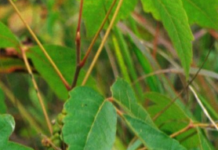By: Scott Eckert, County Extension Agent, Horticulture
The most popular and common vegetable grown in the garden is the tomato! Tomatoes are easy to grow but have a multitude of problems that can occur. Just a few are listed here.
Failure to set fruit
High summer temperatures can reduce the number of tomato fruit harvested in several ways. High day and night temperatures will reduce flower production on tomato plants. If the night temperatures are above 70 F, flower production and pollination are reduced. High temperatures for several consecutive days, coupled with drought conditions, will lead to poor pollination and cause flowers to drop from the plants. Hot drying winds may intensify the problem. Plants sometimes drop their flowers when night temperatures are lower than 55 F.
The most favorable night range for tomato fruit set is between 58 and 68 degrees F. Commercially available blossom-set hormones should not be relied upon because they do not give consistent results.
Physiological leaf roll occurs when the edges of the leaves roll upward and inward. Sometimes the curling continues until the leaf margins from either side touch or overlap. Some leaves on the plant may not exhibit rolling. Leaf roll does not reduce plant growth, yield, or fruit quality. It is believed to result from irregular water supply, and may be intensified following pruning. The symptoms are sometimes temporary, disappearing after a few days, but can persist throughout the growing season.
Herbicide injury
This malady is caused by misapplication or drift of 2,4-D, MCPP, and other growth regulator herbicides. Tomato plants are highly sensitive to these chemicals throughout the growing season. The first symptom is downward curling of leaves and tips of growing points. Leaves
often become narrow and twisted toward the tip, with prominent, light-colored veins. The symptoms are most pronounced on portions of the plant that were actively growing when the exposure occurred. In severe cases, stems and petioles become thick, stiff, and brittle with
warty outgrowths. Affected plants usually recover. However, the fruit may become catfaced or
develop in a plum shape, and may be hollow and seedless. To avoid herbicide injury, do not spray when wind may carry spray drift toward tomatoes or other sensitive crops. In addition, spray at low pressures, use a coarse-spray nozzle, and apply the spray as close to the ground as
possible. Avoid applying other pesticides in sprayers that have previously contained herbicide because traces of herbicide are likely to remain in the sprayer even after thorough rinsing.




